War and Peace was first released in 1980 by the Avalon Hill Game Company. Designed by Mark McLaughlin, the game depicts the Napoleonic Wars from the earliest campaigns in 1805 following Napoleon’s coronation as emperor – in which he crowned himself! – all the way through to Waterloo in 1815. Players can play single scenarios usually representing specific campaigns, such as Austerlitz, Jena, and Wagram, or the entire 10 years of conflict. While a game of this scope might seem daunting, the mechanics are quite simple. Before we get to the long-awaited remake, let us take a closer look at the original.
Original Game Design
The 1980 version came with four map boardssp that, when put together, created a long rectangular playing surface roughly 17-inches high by 44-inches wide that stretched from the Iberian Peninsula in the west to Russia in the east. Besides the major European powers (France, Britain, Prussia, Russia, and Austria), counters representing Spain, Portugal, and numerous other minor powers and satellite states were represented. Some were allied with France, some with the anti-French powers, and some were neutral. The allegiance of some countries, even some of the major powers, could change during play. The game counters represented infantry, cavalry, and naval forces, as well as leaders. Several player aid cards are provided, including the Leader Display that allowed players to put combat units accompanying a leader off board thus minimizing the size of each stack on the map.

Infantry units could only move when stacked with a leader, so wisely using the pool of available leaders was key to playing the game. Each leader had a rating between 0 and 3. The higher the leader rating, the better they were in combat. Napoleon and Wellington were the only leaders with a rating of 3. There was also one naval commander, Admiral Nelson of Trafalgar fame. Only 10 infantry strength-points could accompany a leader (12 strength-points for Napoleon and Wellington). Cavalry could move with or without leaders and as one would expect, they could move more hexes per turn than infantry. Forced march rules allowed infantry and cavalry to move extra hexes per turn, but at the risk of losing strength-points to simulate the effects of exhaustion and injury of men and horses.
Combat occured between adjacent stacks. After moving, the player first decided which adjacent enemy stacks to attack. In each of these attacks, an initial round of combat would be fought. Each side would total up all the strength-points, both infantry and cavalry, in their hex, adjusting for the effects of supply and fortifications. The player with the greater total would be designated the larger force and would divide their strength by that of the smaller force to determine the odds ratio. The player controlling the larger force would then roll two dice, apply any combat modifiers due to leadership, morale, and terrain, and consult the Combat Results Table to determine the outcome. After the initial round of combat, each player could attempt to reinforce the battle with stacks adjacent to either of the two original hexes. They did this by rolling a die and adding their Leader’s rating. If the result was a five or higher, they could then add their strength to the next round of combat.
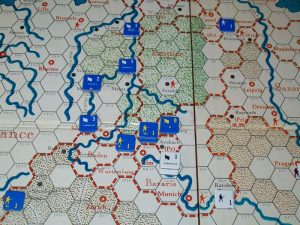
One might think the best strategy was to put as many strength points in a hex as possible, with sufficient leaders so the entire group could move and fight as one. However, the game’s attrition rules discouraged this practice. While many armies of the time did carry supplies and use baggage trains, soldiers were also encouraged to live off the land. Meaning they requisitioned or stole food from farms and villages while on the march. Putting too many soldiers in one area meant the food supply would soon be exhausted. To reflect this, there would be an attrition phase at the start of each player’s turn. Players rolled a die and cross-referenced the die roll with the number of strength-points in each hex to determine how many strength-points would be lost in each hex. The more strength-points in a hex, the greater the possible losses.
The consequence of this was that players would find themselves adopting the corps system pioneered by Napoleon himself. Rather than concentrate the entire Grande Armée into one area (i.e., hex), each corps, usually consisting of two or more infantry divisions plus supporting cavalry, artillery, engineers, and other specialized support units, would be within one day’s march of several other corps. This would allow each corps to mutually reinforce each other but keep them sufficiently spread out to prevent supply issues. It also permitted them to move more quickly since they would not all be moving along the same roads. If one corps came under attack, it could quickly call upon assistance from other nearby corps. Conversely, when on the offensive, one corps could temporarily fix an enemy army in place while reinforcements marched to their aid to overwhelm the enemy.
The game included rules for besieging cities, entrenchments and fortifications, cavalry charges, as well as naval and diplomacy rules, but the core rules were quite simple. Yet they accurately simulated how campaigns were fought during the period. Napoleon would often start a battle severely outnumbered, but it was his ability to concentrate forces more quickly than his opponents that led to many of his stunning victories. Only when his enemies learned to do the same did the tide eventually turn against France. This simple, yet realistic, design was one reason War and Peace was nominated for a Charles S. Roberts award for Best Pre-Twentieth Century Game. It also explains why my copy of the game quickly wore out.
While a second edition of War and Peace was released in 1981, it mostly cleaned up the campaign scenario rules. Subsequent rules updates were published, along with additional scenarios, variants, and optional rules in The General and other gaming magazines. An unofficial updated map board was even created. But in general, the look and feel of the game remained largely unchanged for 40 years.
The Remake
One Small Step released Mark McLaughlin’s War and Peace earlier this year. So, how does it compare to the original? First, it stays true to McLaughlin’s elegantly simple design. As they say, “If it ain’t broke, don’t fix it.” However, some significant changes were made. The most noticeable of these are the components. The map and counter artwork are much improved as one would expect given the advancement in desktop publishing and graphics since the 1980s. Rather than monochromatic silhouettes, infantry and cavalry are depicted in full color with each nation’s troops wearing distinctive uniforms. The leader counters now include images, not just names, and some of the images for the more notable leaders are based on actual portraits of the real personages.
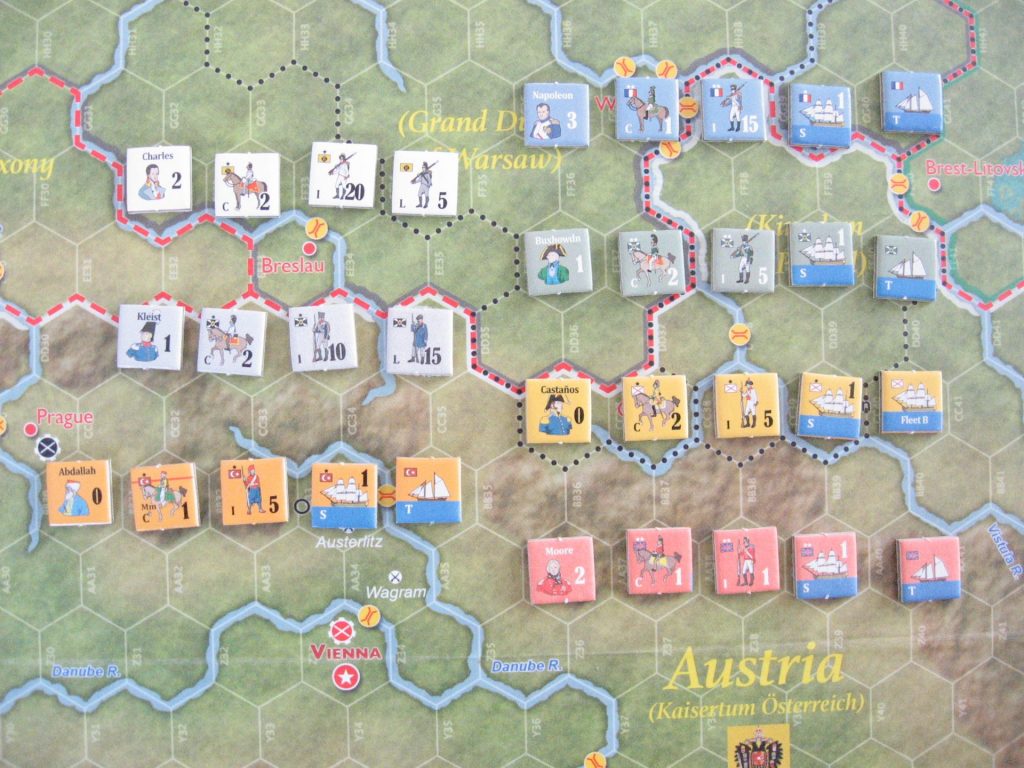
The board itself is significantly larger because of the different orientation of the geographic region depicted. The new board is more square-shaped – roughly 34-inches high by 44-inches wide, but rather than having the land mass laid out horizontally, it is placed diagonally. The extra space this creates in the upper left and bottom right corners of the board provide extra space for a map insert to play Napoleon’s Egyptian campaign, a global naval movement map, and numerous charts and tables that were printed on separate player aids in the original version.
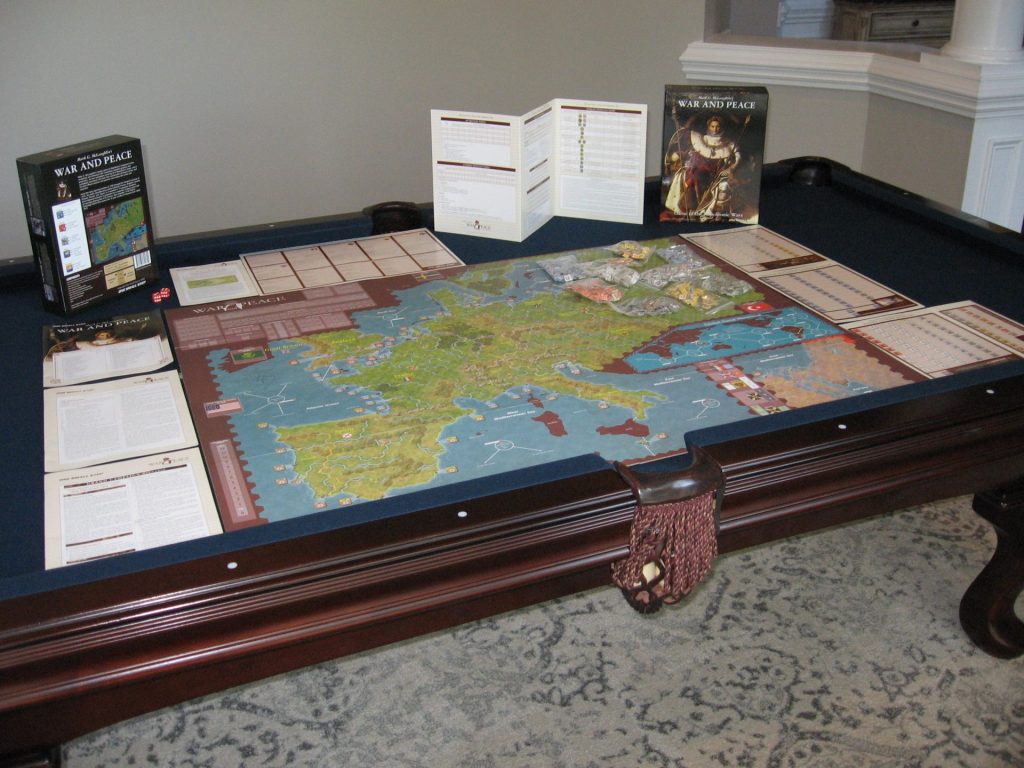
While the new board is larger and more colorful than the original, some posts on BoardGameGeek have raised objections. But as co-designer, John Grant, points out, any flat two-dimensional representation of a curved surface is going to distort the size and shape of some areas. Just look at how large Greenland appears on most world maps. He also makes the point that superimposing a hexagonal grid on a map forces additional compromises (for example, the location of specific cities, rivers, and other terrain features). I, for one, much prefer the new map over the original, which incidentally had its own imperfections.
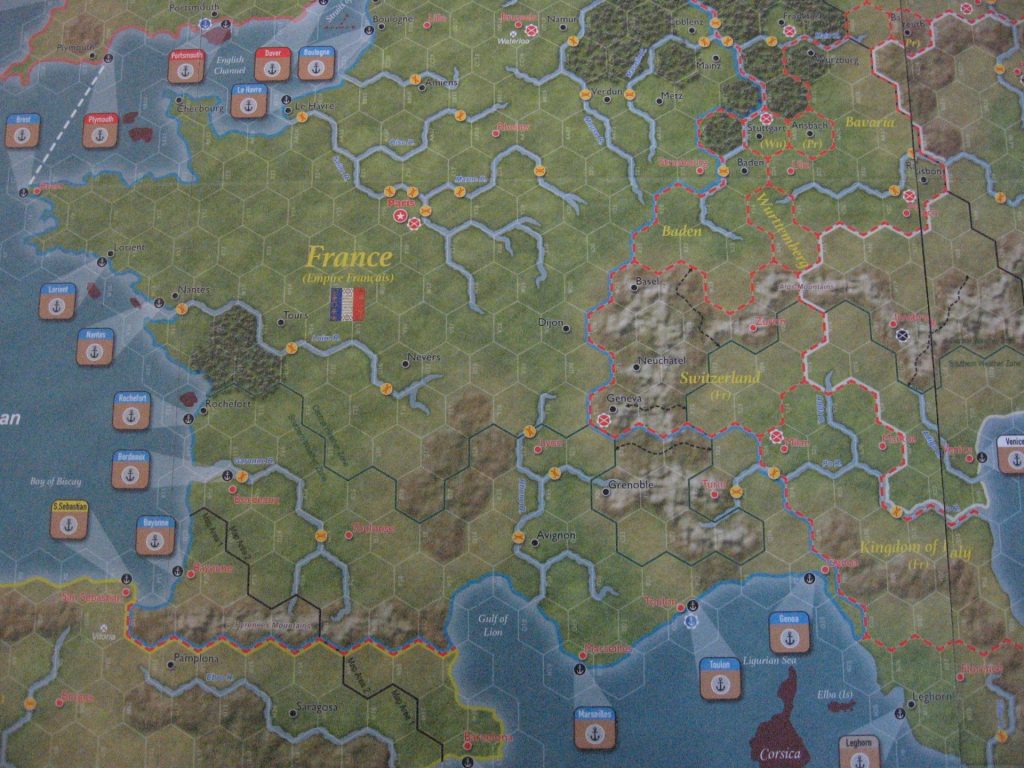
The rulebooks (Standard and Campaign) have been completely revamped and now contain all previous errata, official variants, and optional rules. They are also more lavishly illustrated in full color. The scenario booklet contains several new scenarios, such as Napoleon’s earlier campaigns in Italy in the late 1790s prior to his becoming emperor. The player aids are printed on heavier laminated card stock. There is even a small Operational Methods pamphlet describing how to employ “Le Bataillon Carré” (literally the square battalion) mutually reinforcing corps system.
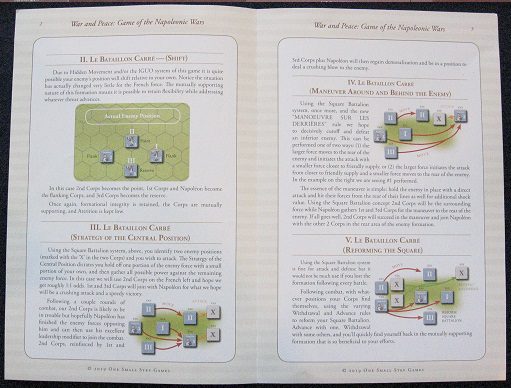
All of these upgrades result in a stunningly beautiful game that retains the simplicity and genius of the original game’s mechanics. The standard (non-campaign game) rules are only 16 pages in length with two additional pages of optional rules. While this new version is not free of mistakes – it’s rare to see a wargame that is – John Grant regularly posts clarifications and answers to player questions on both BoardGameGeek and Consimworld, including a complete list of all known errata.
Summary
During the 80s I played every War and Peace scenario, including the campaign scenarios, at least three times and fondly remember the hours of enjoyment I had. While it has been decades since I last played the game, it has always been on my list of top 5 Avalon Hill wargames I wanted to see resurrected. I am so pleased that One Small Step has. If you have any interest in the Napoleonic Wars and are looking for just one game on the subject, Mark McLaughlin’s War and Peace could very well be that game.


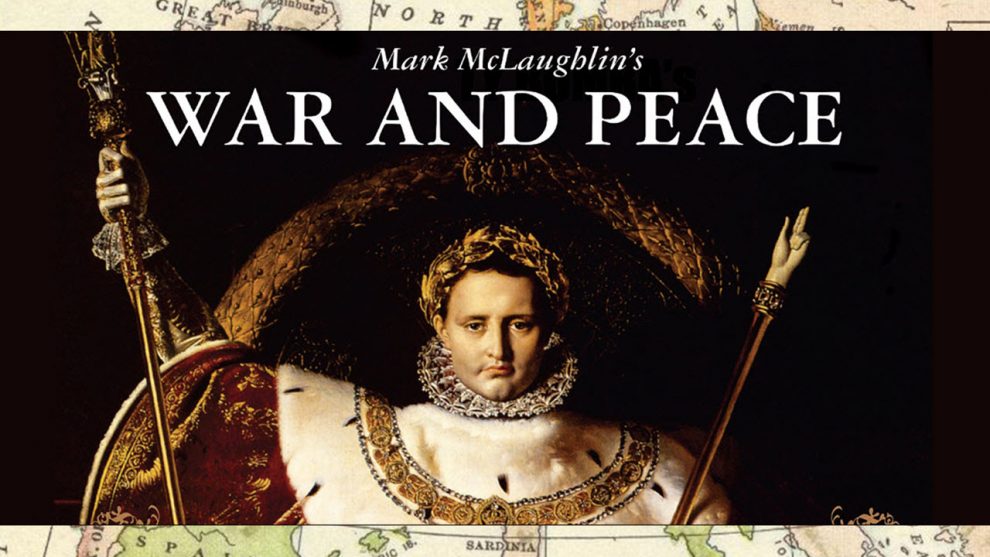
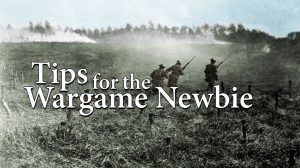







Hi. Is the revised gameboard a paper poster or actually mounted on rigid cardboard? Thanks. BH.
Hi Bruce. It is a mounted board that comes in two 22 x 34-inch sections.
I have just installed the digital version of this game on my iPad. There is an also a PC version. Both are full implementation of the rules with AI for some of the scenarios. It is amazing that such a big game can fit on an iPad!